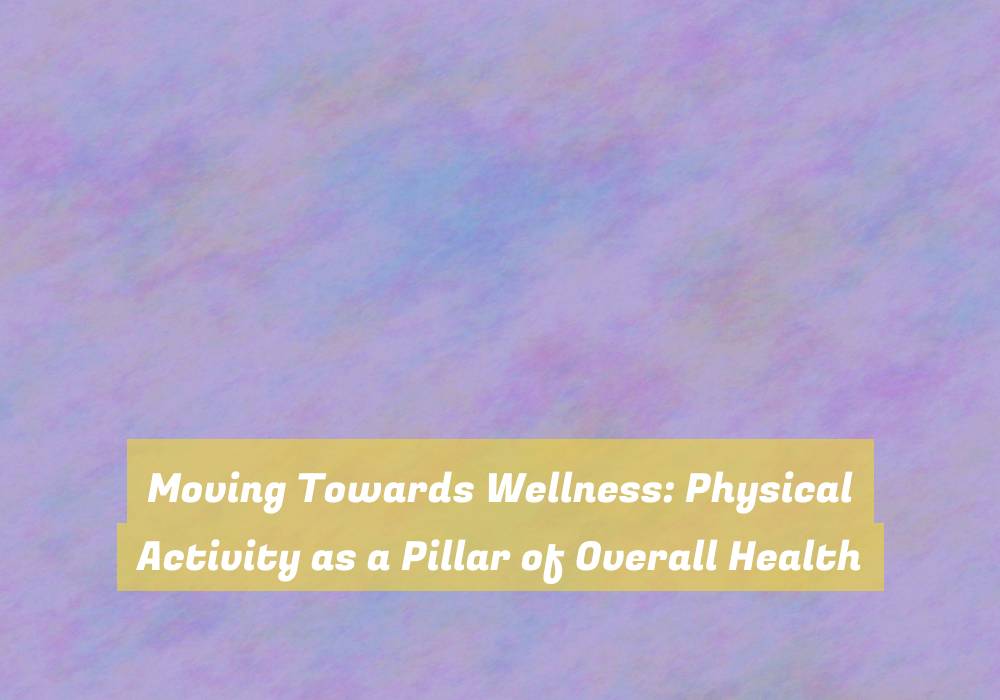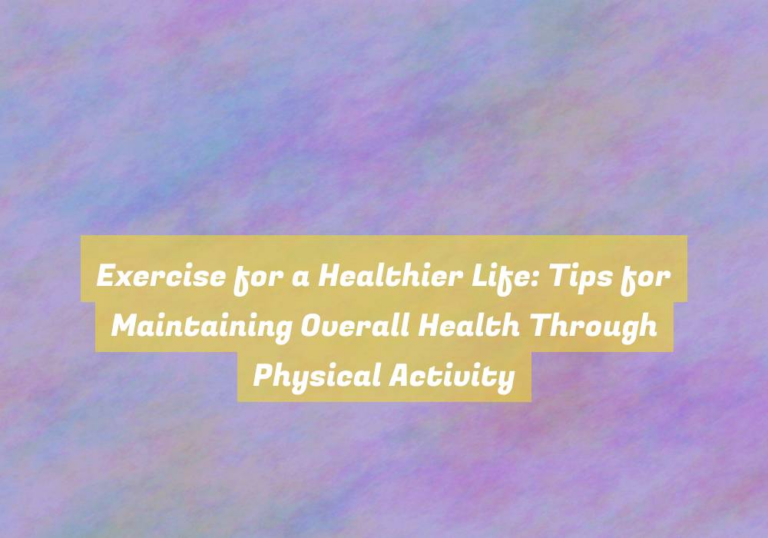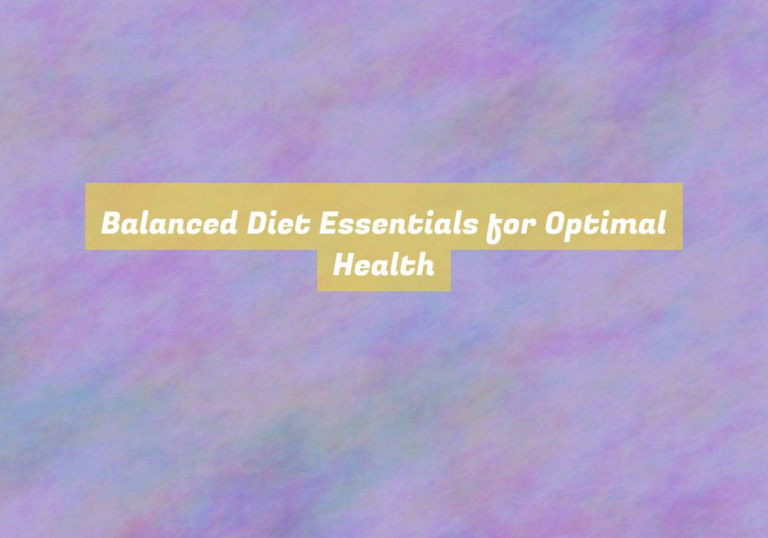Moving Towards Wellness: Physical Activity as a Pillar of Overall Health
You probably already know that physical activity is important for your overall health, but the extent to which it impacts your well-being might surprise you.
Regular exercise isnG??t just about staying fit or losing weight; it plays a crucial role in almost every aspect of your physical and mental health.
From reducing the risk of chronic diseases to improving your mood and cognitive function, the benefits are extensive.
But how exactly does physical activity achieve all of this? LetG??s explore the science behind the profound impact of exercise on your wellness.
Importance of Physical Activity
Engaging in regular physical activity is essential for maintaining good health and overall well-being. By incorporating physical activity into your daily routine, you can improve your cardiovascular health, strengthen your muscles and bones, and enhance your mental well-being.
Regular exercise helps to reduce the risk of chronic diseases such as heart disease, diabetes, and obesity. It also plays a crucial role in managing stress, anxiety, and depression, promoting a positive mood and boosting your self-esteem.
Furthermore, engaging in physical activity can help you maintain a healthy weight and reduce the risk of weight-related health issues. It also improves your quality of sleep, increases your energy levels, and enhances your ability to perform daily tasks with ease.
Whether itG??s going for a brisk walk, swimming, cycling, or participating in sports, finding an activity that you enjoy can make it easier to incorporate regular exercise into your lifestyle.
Incorporating physical activity into your daily routine not only benefits your physical health but also contributes to your overall sense of well-being. Making time for regular exercise is an investment in your long-term health and vitality.
Health Benefits of Exercise
Regular physical activity offers numerous health benefits, including improved cardiovascular function, strengthened muscles and bones, and enhanced mental well-being. Engaging in regular exercise helps to lower blood pressure, improve blood circulation, and reduce the risk of heart disease. It also plays a crucial role in maintaining a healthy weight and reducing the risk of obesity, which is linked to various chronic health conditions such as diabetes and certain types of cancer.
Furthermore, physical activity helps to strengthen muscles and bones, reducing the risk of osteoporosis and frailty, especially as you age. Weight-bearing exercises, such as walking, running, and resistance training, are particularly effective in promoting bone health and preventing muscle loss.
In addition to the physical benefits, exercise has a profound impact on mental well-being. It can alleviate symptoms of depression and anxiety, improve cognitive function, and enhance overall mood. Regular physical activity stimulates the release of endorphins, often referred to as the G??feel-goodG?? hormones, which can contribute to a sense of well-being and reduce stress levels.
Incorporating regular exercise into your routine is a powerful way to improve your overall health and well-being.
Types of Physical Activity
To achieve a well-rounded fitness routine, consider incorporating a variety of physical activities into your schedule.
Aerobic exercises, such as running, swimming, or cycling, are great for improving cardiovascular health and boosting endurance. These activities can also help in weight management and reducing the risk of chronic diseases.
Strength training, involving exercises like weightlifting or bodyweight exercises, helps in building muscle mass, increasing metabolism, and improving bone density.
Flexibility and balance exercises, like yoga or tai chi, can enhance your range of motion, reduce the risk of injury, and promote relaxation.
High-intensity interval training (HIIT) is another effective type of physical activity that involves short bursts of intense exercise followed by brief recovery periods. It can improve cardiovascular fitness, increase calorie burn, and save time.
Additionally, recreational activities such as dancing, hiking, or playing sports not only provide physical benefits but also contribute to mental well-being.
Incorporating Movement Into Daily Life
Incorporate movement into your daily life by finding opportunities to stay active throughout the day, building on the varied physical activities discussed earlier.
Start by incorporating small changes, such as taking the stairs instead of the elevator or walking or biking to nearby destinations instead of driving. These simple adjustments can add up and make a significant impact on your daily activity level.
Additionally, consider setting a timer to remind yourself to stand up and stretch or take a short walk every hour, especially if you have a sedentary job. When running errands, park farther away from the entrance to increase your daily step count. Household chores like vacuuming, gardening, or doing laundry also provide opportunities to move and stay active.
Consider incorporating short bursts of activity, such as doing jumping jacks during TV commercial breaks or taking a 10-minute walk after meals. By integrating movement into your daily routine, you can enhance your overall health and well-being.
Conclusion
So, remember, staying active isnG??t just about looking good, itG??s about feeling good too. Whether itG??s a daily walk, a workout at the gym, or even just stretching at your desk, every little bit counts towards your overall wellness.
So, keep moving, keep challenging yourself, and enjoy the countless benefits that physical activity brings to your mind, body, and spirit. Your health is worth it. Keep it up!







